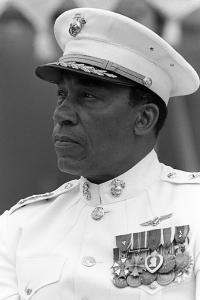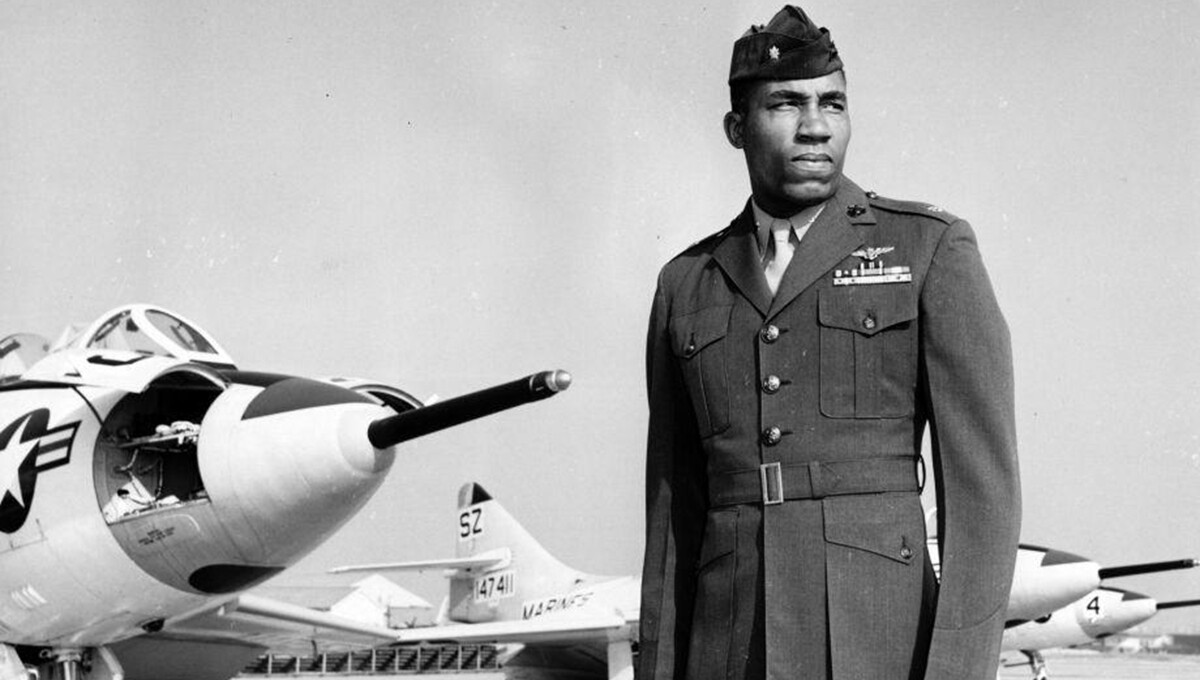 Frank E. Petersen, Jr. enlisted in the U.S. Navy in June 1950 as a seaman apprentice and served as an electronics technician. When Petersen aced the Navy’s entrance exam, the recruiter told him he would make a “great steward”. However, being motivated by the recent Korean War combat death of the Navy’s first black aviator Jesse L. Brown in December, Petersen vowed to be a combat pilot.
Frank E. Petersen, Jr. enlisted in the U.S. Navy in June 1950 as a seaman apprentice and served as an electronics technician. When Petersen aced the Navy’s entrance exam, the recruiter told him he would make a “great steward”. However, being motivated by the recent Korean War combat death of the Navy’s first black aviator Jesse L. Brown in December, Petersen vowed to be a combat pilot.
In 1951, he entered the Naval Aviation Cadet Program. In October 1952, he completed flight training and accepted a commission as a second lieutenant in the Marine Corps. Petersen served a combat tour in the Korean War (1953) and in the Vietnam War (1968). His first tactical assignment was with Marine Fighter Squadron 212 during the Korean War. He would fly over 350 combat missions, and had over 4,000 hours in various fighter/attack aircraft. He held command positions at all levels of Marine Corps aviation, including a Marine Fighter Squadron, a Marine Aircraft Group and a Marine Aircraft Wing. He was also the first African-American to command a fighter squadron, a fighter air group, an air wing and a major base.

On February 23, 1979, he was promoted to brigadier general, becoming the first African-American general in the Marine Corps. In May 1983, he advanced to the rank of major general and on 12 June 1986, he was promoted to lieutenant general. Upon his retirement, he was presented the Distinguished Service Medal for exceptionally meritorious service as the Commanding General, Marine Corps Combat Development Command, Quantico, Virginia, from June 1986 to July 1988.
On February 21, 2017, the keel was laid for the future guided-missile destroyer USS Frank E. Petersen, Jr. (DDG 121) at Huntington Ingalls Industries shipyard, Pascagoula, Mississippi.
Watch the compelling story of General Petersen and the racial transformation of the Marine Corps from Frank E. Petersen, Jr. himself.


1 Comment
Guy Blocker
I had the honor of knowing Frank and there was no better role model. Listening to him speak of his experiences as a black aviator but not letting that define him. If you want to know more about him I highly recommend his book “Into The Tiger’s Jaw”.
Comments are closed.